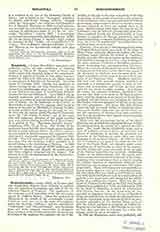

Nonantola, a former Benedictine monastery and prelature nullius, six miles northeast of Modena, founded in 752 by St. Anselm, Duke of Friuli, and richly endowed by Aistulph, King of the Longobards. Stephen II appointed Anselm its first abbot, and presented the relics of St. Sylvester to the abbey, named in consequence S. Sylvester de Nonantula. After the death of Aistulph (756), Anselm was banished to Monte Cassino by the new king, Desiderius, but was restored by Charlemagne after seven years. In 883 it was chosen as the place of a conference between Charles the Fat and Marinus I. Up to 1083 it was an imperial monastery, and its discipline often suffered severely on account of imperial interference in the election of abbots. In the beginning of the Conflict of Investitures it sided with the emperor, until forced to submit to the pope by Mathilda of Tuscany in 1083. It finally declared itself openly for the pope in 1111. In that year the famous monk Placidus of Nonantola wrote his “De honore Ecclesiae”, one of the most able and important defenses of the papal position that were written during the Conflict of Investitures. It is printed in Pez, “Thesaurus Anecdot. noviss.” (Augsburg, 1721), II, ii, 73 sq. The decline of the monastery began in 1419, when it came under the jurisdiction of commendatory abbots. In 1514 it came into the possession of the Cistercians, but continued to decline until it was finally suppressed by Clement XIII in 1768. Pius VII restored it January 23, 1821, with the provision that the prelature nullius attached to it should belong to the Archbishop of Modena. In 1909 the exempt district comprised 42,980 inhabitants, 31 parishes, 91 churches and chapels, 62 secular priests and three religious congregations for women. The monastery itself was appropriated by the Italian
Government in 1866.
MICHAEL OTT

